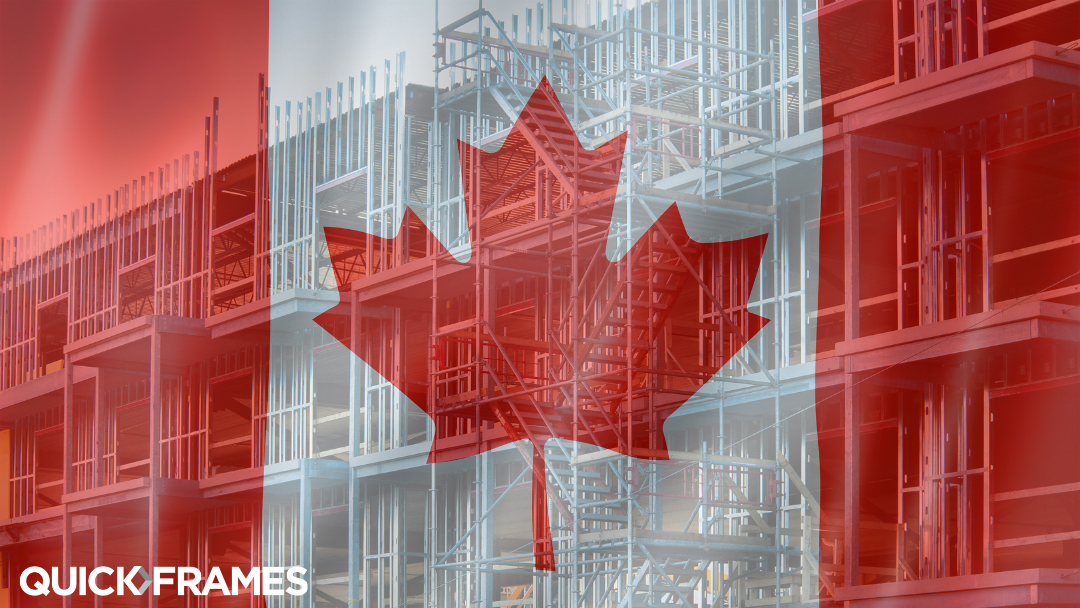Construction Market Growth Trends in Canada
By Tristan Jorgenson, Business Development, QuickFrames
We’re based in Mesa, Arizona, but we sure appreciate our neighbors to the north. Not only have many Canadian construction companies become devotees to our pre-engineered structural steel framing components, but their contributions to the industry are also very admirable. Like many others in commercial and steel frame construction, Canada was hit hard this past year by the pandemic and all of its aftermath.
But, the country’s resilience and recent economic projections are promising a strong recovery and upward ascent. Here’s a look at the market right now, its expected growth and what’s likely to come.
Planned Investments, Warehouses & Growth
Canada’s construction industry value was at USD $291.2 billion in 2018 and is predicted to grow to USD $304.6 billion by 2023. Part of the reason for this anticipated growth is the government’s planned infrastructure investments. Launched in 2016 and dubbed the “Investing in Canada” plan, the Canadian government pledged to invest more than $180 billion over 12 years for infrastructure that benefits citizens.
A recent report suggests that the “non-residential construction sector will lead industry growth between 2021 and 2023 and be driven by a large list of public transit, health care, education, roadwork and other civil infrastructure projects.” Canadian construction employment is expected to rise to meet this demand, with forecasts estimating an additional influx of close to 65,000 workers over the next decade.
There have also been projections that Canada is nearing a “warehouse building boom” as demand for online goods increases. It’s expected that 40 million square feet of warehouse space will be needed in the next five years after e-commerce sales rose 32% last year. All of this is very encouraging for the country and the industry and gives us glimpses of brighter days post-pandemic.
It’s expected that 40 million square feet of warehouse space will be needed in the next five years after e-commerce sales rose 32% last year.
Areas of Note
Despite the positive economic and growth figures, many believe the COVID-19 vaccine rollout has been slower than expected and the threat of more transmissible variants may delay the reopening of sectors like leisure and hospitality even longer. Still, general expectations are that reopenings will in fact happen, and the industry is on its way to rebounding.
There is also some conversation around the fact that remote work is likely to continue in at least some capacity post-pandemic. So while square feet per office worker was declining prior to last year, it may need to increase again. Even if the number of folks onsite at office buildings is smaller due to a partially remote workforce, there will likely be a need for more space to accommodate social distancing and new safety protocols.
Market by Market
Each province in Canada has its own planned projects and unique circumstances, and here are some notable highlights for the Canadian construction market.
- British Columbia – An anticipated increase of 11,400 non-residential workers through 2022.
- Saskatchewan – Investments in education, health care, utility and more contribute to growth, which should spike around 2023.
- Quebec – Thanks to private-sector spending and government investment, this market looks like it will be strong well into 2024.
- Ontario – In line for a pipeline of major infrastructure projects and investments into commercial and industrial construction, this popular province should be trending upward in growth and construction employment through 2026.
We’re rooting for you, Canada. If you have upcoming steel frame construction projects that require rooftop equipment supports, give us a call or start a fast quote here.


